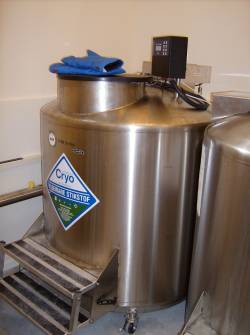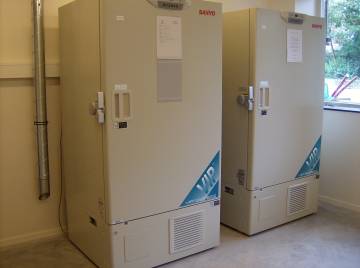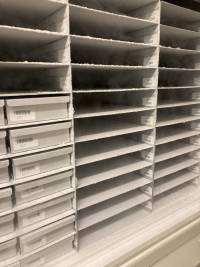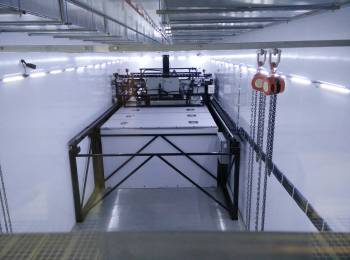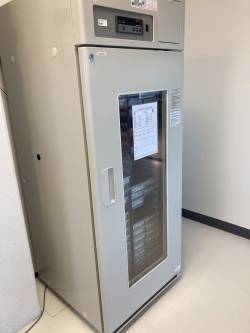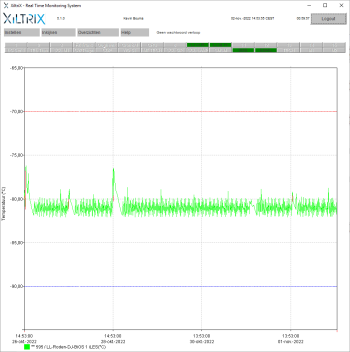Table of Contents
Sample Storage
All of the Lifelines biosamples are safely stored under optimal conditions in a state-of-the-art storage facility, the Lifestore. Logistics and storage activities are carried out following standard operating procedures and operated under a strict quality management system, using temperature monitoring, alarm systems, back-up freezers, redundancy of all essential infrastructure, and emergency backup generators. All operations and infrastructures are designed to handle samples with care, to use safe static storage, to know where and what the storage conditions are, to send out a notification when a problem is detected, and to have a solution available.
Liquid Nitrogen
Whole blood that Lifelines collected from participants during the baseline assessment are being preserved in liquid nitrogen.
Sanyo Ultra-Low Temperature Freezers
Following biosample collection, reception, and processing, the first priority is to move the biosamples from refrigerated storage options into cryostorage for long term preservation. To this end Lifelines currently maintains 50+ cryofreezers (PHCbi Sanyo Ultra-Low Temperature Freezers MDF-U74V or equivalent) at the Lifestore. For samples incompatible with the BiOS storage (such as DAG2, DAG3, and the Sarstedt archive) this is their final destination.
Hamilton BiOS Storage
The cryofreezers are an interim storage solution until the blood (plasma, serum, and buffycoats), stock DNA, and urine samples can be stored in the Hamiltion BiOS. The BiOS is an automated storage system specifically designed to store sensitive biological samples at -80 degrees celsius throughout their entire lives inside of the system. The BiOS is able to sort samples, manage the inventory, and process and deliver orders. In addition, the BiOS records a full audit trail and temperature log for all of the sample in the system.
Cold Storage
Lifelines has multiple pharmaceutical-grade refrigerators (PHCbi Sanyo MPR-721-PE or equivalent) at the Lifestore for biomaterials that remain stable for extended periods of time at 4 degrees celsius, such as DNA samples normalised to 100 ng/μl.
Room Temperature
Hair samples and dried blood spots are stored at room temperature.
24/7 Surveillance
XiltriX measures, evaluates and stores physical parameters and variables via a real-time network of analogue and digital sensors. Every sensor connected to the network is measured multiple times per minute. These measurements are then digitalized and stored in the server backend. The software evaluates the measurements against preset alarm limits. When the measured value is out of bounds, an alarm is automatically activated and sent to Lifelines personnel to inform them of the problem.
